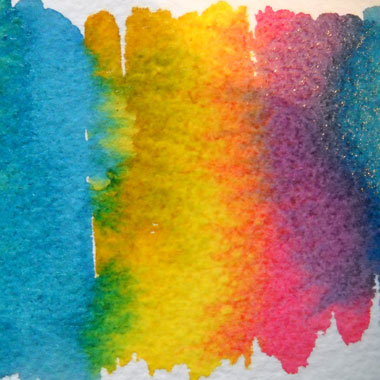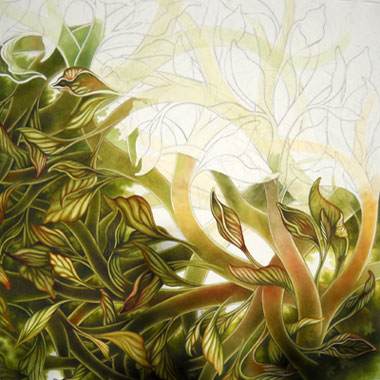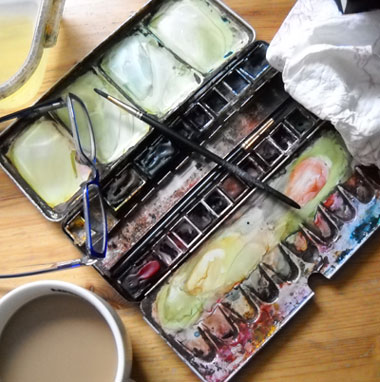Technique
Anna starts every piece by putting structure and composition in place in large strokes with a big brush and watery paint. Her all-time favorite paper is Arches Rough 300 g. The paper is 100 % rag and can take almost any mishandling when wet.
The next step is one she enjoys a lot: drawing with pencil on the water color sheet. This phase can take hours. Then, she starts painting in the lower right corner, working her way clock wise until she is back where she started. She uses a # 4 synthetic water color brush.
Anna blends colors in four ways to create her unique style: The traditional way in her metal color box, optically by adding thin layers of paint on top of each other, glazing with water to mix and soften or with tiny dots. The purpose of the dots is also to create structure to for example branches.
In the water color classes at Santa Barbara City College, artist and water color expert Cathy Quiel pointed out how easy it is to “make mud” when blending the wrong colors. Anna soon found three colors that could mix the vibrant and beautiful blends she wanted, with no risk of mudmaking. Those three were Antwerp blue, New Gamboge Yellow and Permanent rose. For many years, she used nothing but these three. Lately, a few other reds have made their way into her paint box. But no other blues nor yellows are welcome.



